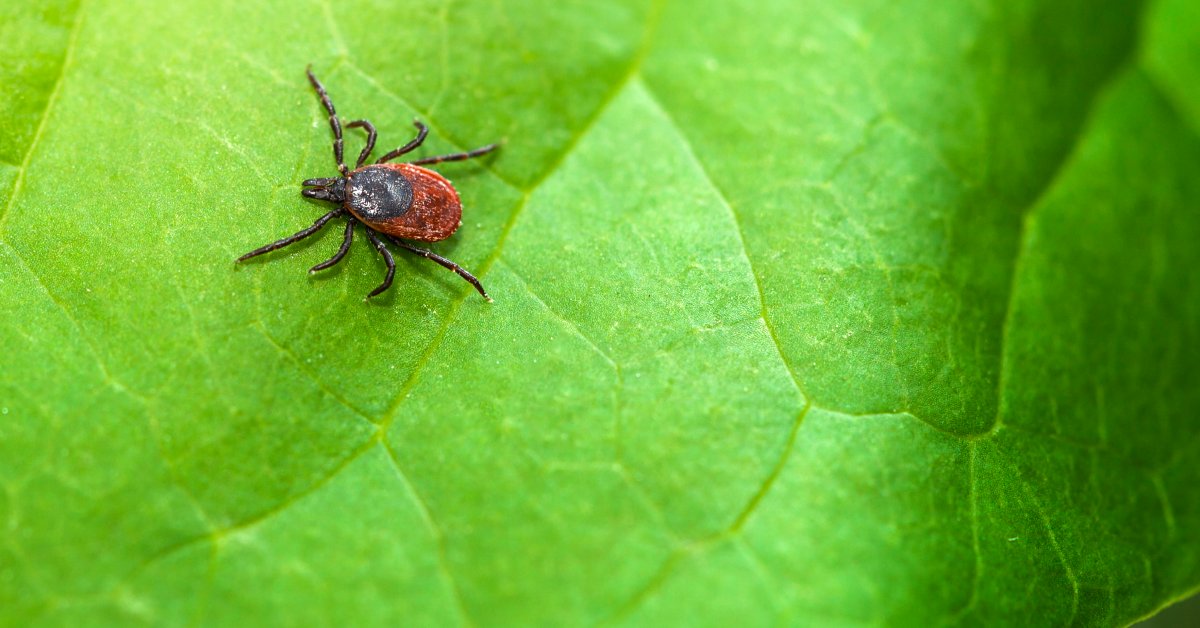You most likely received’t see a tick because it clings to a blade of grass, however it will probably see you. The tiny parasites are opportunists that spend their days ready for people, canines, and different mammals to brush towards them to allow them to latch onto uncovered pores and skin and feed on blood. Because the local weather warms and tick populations proliferate, there’s a superb likelihood that in lots of components of the U.S., you’ll get intimately acquainted with one this summer season.
Most individuals who get bitten by a tick will probably be completely tremendous, says Michel Shamoon-Pour, a molecular anthropologist on the Binghamton College Tick-borne Illness Heart in New York. However a small proportion develop severe signs associated to Lyme illness and different diseases, together with anaplasmosis and babesiosis. “The perfect factor you are able to do is keep away from a tick chew—and, in case you discover a tick, take away it shortly and safely,” Shamoon-Pour says. “That’s the closest we get to not having to fret about diagnosing or treating an an infection. Simply put a cease to it earlier than it begins.”
Tick removing requires method—and in case you don’t do it appropriately, you possibly can enhance your danger of an infection. We requested consultants for the perfect and worst methods to take away a tick.
Finest: Use fine-tip tweezers
Worst: Use your fingers or a tweezers with a large tip
Ticks are remarkably small—many aren’t any larger than a poppy seed, Shamoon-Pour says. Grownup deer ticks, for instance, are about 1/tenth of an inch after they’re not engorged. For those who go after one along with your large, clumsy fingers, or a big tweezers, you’re most likely going to finish up grabbing the physique of the tick—and that’s one of many chief errors consultants report folks make. Talking of…
Finest: Seize the tick’s mouth
Worst: Go after its physique
Once you’re able to take away a tick out of your physique (or another person’s), use your tweezers to clasp its mouth, which is the half digging into your pores and skin. Don’t seize your entire physique. For those who do, you’ll find yourself squeezing it, “and our concern is the potential presence of pathogens,” Shamoon-Pour says. “For those who squeeze the tick, you’re going to be principally emptying no matter is in its physique, together with probably pathogens, into your pores and skin.”
When you’ve clamped onto the tick’s mouthpiece, pull it straight up with regular, even stress. Then, clear the affected space with rubbing alcohol, and wash your arms with cleaning soap and water or sanitizer.
Finest: If the tick breaks, depart its mouth or legs there
Worst: Dig round for any lingering items
Generally, a tick will break into items whilst you’re eradicating it, and its mouthpiece or legs will stay in your pores and skin. (You’ll normally be capable of inform since you’ll nonetheless see a small black dot on the spot the place it was connected.)
Learn Extra: Learn how to Spend Time Exterior if You Hate Getting Sweaty
When this occurs, let these remnants there. “Truthfully, it’s not a giant deal,” Shamoon-Pour says. “It’s gross, clearly, however these sorts of issues occur.” Your physique doesn’t like overseas objects, he provides, and inside a number of days, your pores and skin could have pushed it out.
Finest: Stick with the tweezers-removal method
Worst: Attempt to suffocate the tick or burn it off
Individuals usually fall for so-called tick removing treatments like utilizing a match to burn the parasite off or smothering it with petroleum jelly, nail polish, or some sort of noxious substance. “We will guarantee you the tick will certainly not fall off,” Shamoon-Pour says. “None of this stuff will work.” Plus, after all, actually enjoying with hearth may end up in burns way more severe than an interloping tick.
Finest: Flush it or suffocate it with tape
Worst: Crush it to demise
Ticks may be tough to kill. When you’ve eliminated one, wrap it tightly in tape so it’s not getting any oxygen, and put it within the trash, says Dr. Amy Duckro, an infectious illness specialist with Kaiser Permanente in Colorado. You would additionally submerge it in rubbing alcohol or flush it down the bathroom. No matter you do, don’t crush the tick: Probably contaminated blood, guts, and saliva can pour out, growing your danger of getting sick.
Finest: For those who’d quite maintain the tick, simply in case, protect it in a sealed container
Worst: Instantly ship it off for testing
Lee Ann Sporn, a professor of biology at Paul Smith’s School in New York, fields numerous calls from folks asking if they need to ship their tick to a analysis lab to have it examined for an infection after it’s bitten them. She recommends towards it (recommendation echoed by the U.S. Facilities for Illness Management and Prevention). There are a pair causes for that: “One is that even when the tick does present proof of one thing that causes illness, it definitely doesn’t suggest you’ll contract the illness,” she says. “It’s not an absolute, and it may result in over-treatment.” On the flipside, if the tick is destructive for illness, “it doesn’t suggest you’re home-free,” Sporn says. “For those who had been bitten by one tick, you will have been bitten by a number of and had been unaware.” Plus, many tick-testing labs have insufficient high quality management, she provides, and the outcomes aren’t diagnostic grade.
Learn Extra: Learn how to Deal With Sweaty Toes
Specialists agree that instantly disposing of a tick after you take away it’s a protected guess. That mentioned, in case you’re significantly anxious in regards to the tick chew, you do have another choice: You would put the tick in rubbing alcohol after which drop it right into a sealed container or plastic bag and put it aside in your freezer. That method, in case you do find yourself getting sick, you possibly can present it to your physician for correct visible identification, Sporn says. She additionally recommends taking a photograph of the tick chew and the tick itself. You’ll then have a helpful, dated documentation for future reference. “Let’s say a number of weeks down the highway, you develop a fever and flu-like signs, and a health care provider asks, ‘Have you ever been bitten by a tick?’” she says. “You’ve gotten that document and might say, ‘Sure, I used to be on at the present time, and this is what the tick appeared like.’ That is actually useful info.”



